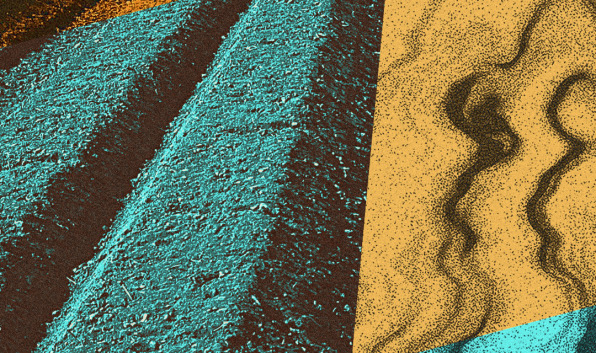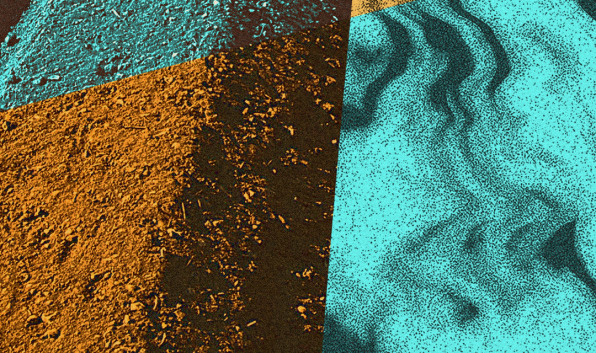This “carbon removal marketplace” will make buying offsets easier
As companies like Lyft start to invest to make up for their carbon footprints, the world of offset buying needs more transparency and accountability.

On his small family farm in Petaluma, California, Don Gilardi hopes to begin spreading compost over his pastures next year as a way to fight climate change. The technique helps plants pull more carbon from the air and store it in the soil. The farm will also use other “carbon farming” methods, like planting trees on pastures and managed grazing. In doing so, it could sequester an average of 295 metric tons of CO2 a year, more than the emissions of driving a Toyota Camry a million miles. In 20 years, the farm could sequester 32 times as much carbon.
A new “carbon removal marketplace” hopes to make it easier for consumers and businesses to directly support farmers who, like Gilardi, want to shift to climate-friendly practices. It will also later connect consumers to other types of carbon offsets, such as those from tree-planting projects. Called Nori, the new platform, which will launch by the end of the year, will use blockchain to streamline the process of buying and selling offsets.
The funding that the platform enables could help encourage farmers to transform their operations. “I’m definitely looking for funding for this,” says Gilardi. “Even though my farm is only 80 acres, to implement the plan is $4 million-$5 million. I’m looking for ways to sell my carbon credits.”

For a company that wants to pay to offset some of its emissions–for example, the carbon footprint of its employees’ flights, or, in the case of Lyft, the emissions from customers taking rides–Nori hopes to simplify a process that can be complex. Finding a project to support usually involves a bespoke process of working with brokers who recommend what to buy.
When Paul Gambill, founder and CEO of Nori, first started learning about the current market for carbon offsets, “I was drawing out the system and realized there are something like seven or eight middlemen that stand between a project developer and a buyer,” he says. “Several of those middlemen are really just maintaining a database–they’re not contributing much more value than that. I looked at that and said okay, well, that’s an obvious application for the blockchain.”
The current process involves, among other things, working with a registry that charges fees to create accounts, transfer credits, or to “delist” credits if an owner wants to sell to someone not in the registry.
Nori’s system creates carbon removal certificates that are initially owned by the supplier–in the case of storing carbon in the soil, a farmer–and then when they are sold to a buyer, the ownership is instantly transferred. Buyers will be able to go on a marketplace and buy blockchain tokens that can be used to pay for carbon removal certificates. The price of the token will be set by the market, so it will vary, but buyers will be able to avoid the time they currently spend with brokers and consultants trying to find projects.
Independent auditors will verify that a project is accomplishing what it claims. But in the future, a system of sensors could also help automatically monitor projects, continually reporting that data on the blockchain as well.
Sensors could bring more transparency to a market that can sometimes be murky. Reputable auditors can solve the problem of knowing that a project is real (in some cases, companies have scammed consumers by selling offsets for projects that never happened). But there’s also the question of how long they will last–if trees that are planted now are cut down in a decade, or a farm later shifts practices and soil carbon is lost, a project may not ultimately be helpful.

“Especially for land-based offsets like forests, which is what I study a lot, but also for soil–for any kind of situation where the carbon is really mobile–you really need to think about what is the risk that that carbon will just go back in the atmosphere in the future,” says Christa Anderson, a doctoral student in environment and resources at Stanford University. “For forests, there could be a forest fire and we’re just going to lose that carbon.”
Part of Nori’s verification process involves auditing a project after seven to 10 years, and if a project isn’t sequestering as much carbon as expected, or if practices change, Nori will buy new carbon removal certificates to make up the difference. But sensors could potentially track a project more closely and catch problems earlier than auditors might. When researchers looked at one carbon offset project that had been certified by a reputable organization–water filters provided in Kenya that were supposed to reduce emissions by reducing the need to boil water over wood-burning fires–they found that most people quickly stopped using the filters. Auditors hadn’t caught the problem.
There are other challenges; one is knowing how much CO2 to credit a particular farm with removing. John Wick, who pioneered some “carbon farming” methods on his California ranch and is working with researchers to carefully quantify exactly how much carbon is being removed, tells Fast Company that that level of research would be too expensive to replicate on every farm, but that it would be possible to estimate the CO2 removal amount with a model. Still, because farms can vary widely, modeling could be difficult to do. Nori will begin with modeling, but later plans to use direct measurements as well.
Like other carbon offset projects, it also can be hard to tell if someone might have been planning to do something even without the incentive of the offset. If you pay a landowner in Indonesia to preserve a section of rain forest, but they didn’t actually have plans to cut down trees, that’s not providing any benefit for the climate. In the case of carbon farming, some farmers are already shifting practices because they recognize that it can save them money in the long term (by reducing the need for fertilizer, for example), or in part because they know that companies will want to buy the product (in the case of a ranch that sells “climate-beneficial” wool to The North Face, or farms that use regenerative agriculture techniques to grow wheat for Annie’s macaroni and cheese). In California, the Healthy Soils Initiative provides financial incentives for farmers to use carbon-sequestering practices. But Gilardi, the farmer from Petaluma, says that grants that are available now don’t cover the whole cost of adopting a carbon plan; carbon offsets, he says, are an important way to fill in the gap.

If selling carbon offsets can help a broader group of farmers decide to make changes–along with other carbon-sequestering projects the company eventually plans to support, such as machines that suck carbon out of the air–the benefits could be substantial. And for companies, if it’s a little easier or cheaper to buy offsets, more may decide to make that purchase to account for emissions that are currently hard to directly reduce. Buying offsets can also give an extra incentive for companies to make changes.
When Lyft decided to offset the emissions for customers using its ride-hailing service, it meant that “they’re accounting for the cost of carbon pollution, which is a good thing,” says Tom Green, climate solutions policy analyst for the Canada-based David Sukuzi Foundation. Canada is moving toward an economy-wide price on carbon, but without that in the U.S., offsets can provide some similar incentives. “Lyft will probably be looking at how they can get more of their drivers into electric vehicles. In which case, the need for carbon offsets diminishes.”
For consumers, a platform like Nori can also make offsets more accessible. Poseidon, another company using blockchain technology to facilitate the sale of carbon offsets, is already beginning to work with retailers to calculate how much carbon is in anything for sale–in the case of their first project, ice cream at a Ben & Jerry’s shop–and then buy the equivalent amount of carbon offsets. Nori similarly envisions that its platform could be embedded everywhere. When you buy gas, the platform could automatically buy carbon credits to offset the emissions from the fuel.
Ideally, it would also encourage people to go further, buying enough offsets to sequester slightly more than needed for a particular purchase. Nori talks about the idea of “reversing climate change,” but that is a distant goal; when the U.N. climate organization IPCC calculated various scenarios for how to keep the planet from warming more than two degrees, almost all of them required a substantial dose of “negative emissions.” Some impacts of climate change, from droughts and heat waves to increased storms, are already here. To bring the earth’s average temperature down, we need to both reach a zero-emissions economy and use “negative emissions” methods, like tree planting and soil sequestration, to begin to remove some of the excess CO2 already in the atmosphere.
Nori hopes its tool will help do that. “I think there are ways that we can build this in so this carbon removal is happening automatically and invisibly in the background in a way that increases beyond offsetting the emissions of whatever that action is,” says Gambill.
